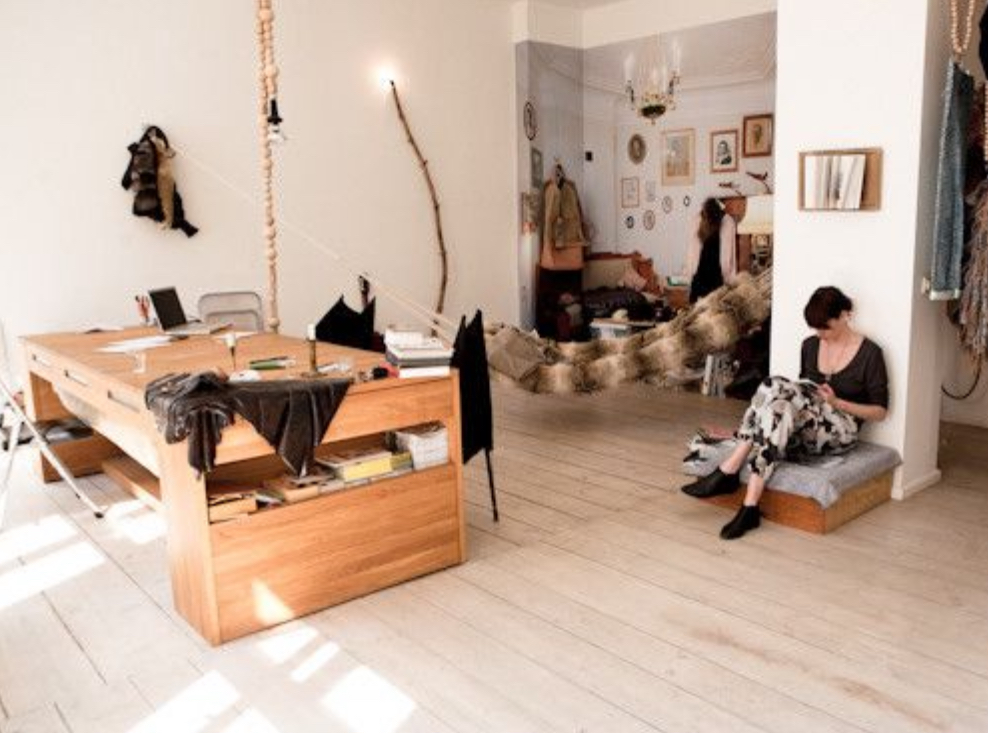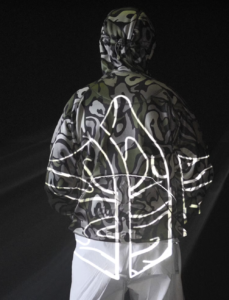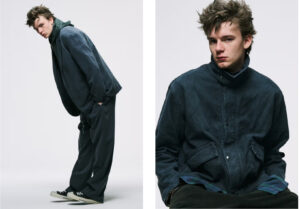The concept of BLESS Home represents an evolution in the way people experience design, art, and lifestyle.
Unlike traditional retail stores or gallery spaces, BLESS Home is a living installation—a place where people not only engage with products but inhabit them, making their existence part of the brand’s narrative. The idea, formally established in 2011, has been home to a diverse array of residents who contribute to its ever-changing layout and ethos.
To understand BLESS Home, we need to trace back its origins. The story begins with the mobile Bless Shop series, first launched in 2000. This experimental retail concept was a response to the limitations of conventional stores. Rather than being tied to a single location, BLESS embraced mobility, allowing its presence to be felt in various cultural settings.
This idea took a more permanent yet fluid form in 2003 when Yasmine Gauster and Schroeder Elgarafi established a physical BLESS store in a small street in Berlin.
However, in 2011, Yasmine closed the shop, leading to the creation of BLESS Home—a hybrid space where retail, residency, and art intersect. Instead of simply selling products, BLESS Home sought to immerse people in the brand’s philosophy, offering an entirely new way to experience design.
Here, residents live within BLESS products, turning everyday life into a curated yet organic performance. The concept moves beyond commerce and into a realm where objects, space, and people co-exist in a continuous state of transformation.
The Essence of BLESS Home: Living Within the Brand
BLESS Home is not just a store, not just a home, and not just an art installation—it is all three at once. It challenges the traditional boundaries of retail by eliminating the transactional nature of shopping. Instead of walking into a store and purchasing a product, visitors engage in an immersive environment where the products are part of a living ecosystem.
The core idea is that the inhabitants of BLESS Home become part of its identity. Each resident shapes the space in their own way, bringing their cultural backgrounds, personal styles, and ways of living into the mix. Over the years, BLESS Home has been inhabited by 12 different individuals, each contributing to its ever-evolving aesthetic and function. These residents come from diverse nationalities, genders, and artistic disciplines, ensuring that BLESS Home remains dynamic and ever-changing.
BLESS Home is a social experiment that explores how design integrates into real life. Instead of seeing products as static, finished objects, they are understood as elements of a larger, fluid experience. Visitors don’t just see a chair—they see how it is used, how it fits into a daily routine, and how it interacts with the space around it.
The 12th Resident: Mitchan’s Journey into BLESS Home
One of the most intriguing aspects of BLESS Home is the personal journey of its residents. The 12th individual to be chosen for this unique residency was Mitchan, whose story embodies the transformative power of BLESS Home.
Mitchan’s path to BLESS Home began in Japan, before the COVID-19 pandemic. He met Ines and Desiree, two creatives working within the BLESS universe, while they were involved in the stage production “no room” by performance artist Saori Hara. Their work encompassed direction, costume design, and stage setup, and their collaboration took place at Keio University’s Mita Campus, specifically in the historic former Noguchi Room.
This encounter sparked a deep curiosity in Mitchan, leading him to volunteer for BLESS Home. However, due to the pandemic, his transition was delayed. It wasn’t until early 2022, after the global situation had stabilized, that he was able to begin his immersive experience as a resident.
The Challenge of Adapting to a Living Brand
While the idea of living inside a conceptual art piece might seem thrilling, the reality was far more complex for Mitchan. Initially, the experience was overwhelming—living within the products of a brand he had long admired came with unexpected challenges.
Reflecting on his early days at BLESS Home, Mitchan described the feeling as:
“When I first arrived in Berlin, I felt like I was playing ‘Animal Crossing’ without subtitles. I felt like a child. During the first three months at BLESS Home, I was living in a world I had long admired, yet it still felt distant—almost as if I were staying in a gallery. My deep respect for the brand’s values made me erase my own individuality.”
His words highlight a paradox at the heart of BLESS Home: how does one balance admiration with self-expression? The space is meant to adapt to its residents, yet it also carries an established artistic identity. Mitchan found himself struggling to reconcile his personal presence with the overwhelming influence of BLESS’s design philosophy.
The Turning Point: “You Are BLESS Home”
As Mitchan wrestled with this internal conflict, a pivotal moment arrived when a former resident of BLESS Home gave him a simple yet profound message:
“Mitchan, you are BLESS Home.”
This statement became a turning point. Instead of seeing himself as a guest or an observer, he began to embrace his role as an integral part of BLESS Home’s identity. This shift in mindset allowed him to reshape the space to reflect his own sensibilities, rather than merely adapting to its pre-existing framework.
His realization reflects a core truth of BLESS Home: it is not the physical space or the objects within it that define its essence, but the people who inhabit it. The residents are not passive occupants—they are co-creators of the brand’s ongoing narrative.
BLESS Home and the Future of Experiential Retail
BLESS Home represents a radical departure from traditional retail and hints at a broader shift in how brands can engage with their audiences. In an era where consumerism is becoming increasingly digital, BLESS Home offers an alternative model based on physical, lived experiences.
Rather than pushing products through advertising and social media, BLESS allows people to physically exist within the brand’s universe. This creates a deeper emotional connection between people and objects—one that goes beyond ownership and into the realm of embodied interaction.
The concept also raises interesting questions about the future of retail and branding:
• Could more brands adopt experiential living spaces rather than traditional flagship stores?
• How do we redefine the relationship between people, products, and the environments they exist in?
• Can design be experienced beyond the boundaries of commercial transactions, becoming something fully integrated into life itself?
BLESS Home suggests that the answer to these questions is a resounding yes. It challenges brands to move beyond mere sales and instead create immersive worlds where people don’t just consume—they co-create and live within the brand’s values.
Impression
BLESS Home is more than just a physical space—it is a philosophy, an experiment, and a constantly evolving artwork. It takes the concept of home, retail, and experience, and weaves them into a new form of interaction.
For Mitchan, what began as a struggle to find his place within BLESS Home turned into a powerful realization: he was not just living there—he was an essential part of it. This sentiment is the heart of BLESS Home: the idea that people are not merely visitors to a designed space, but active participants in shaping its meaning.
As the world continues to seek new ways to engage with design, art, and consumer culture, BLESS Home stands as a bold statement on the power of experiential living. It is a place where life and art are not separate, but rather, inseparable.
No comments yet.







